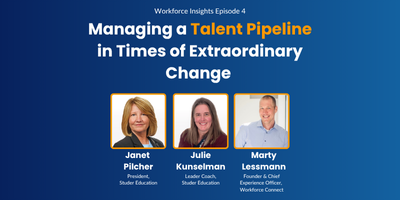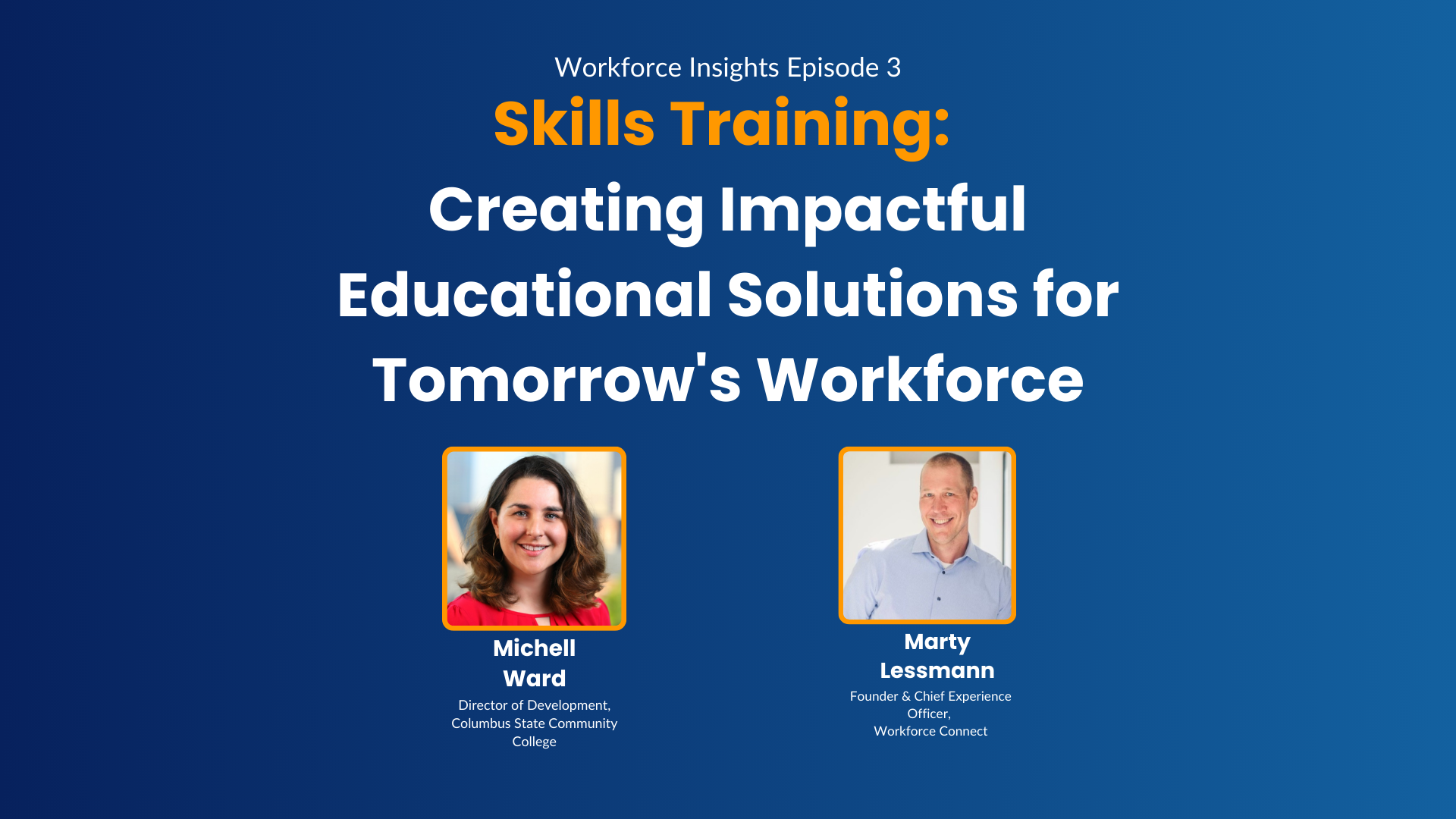Executive Summary
Effective communication is the cornerstone of successful partnerships between community and technical colleges, workforce organizations, and employer partners. However, managing these relationships can be challenging, particularly when employers face frequent contact from multiple departments and people, leading to confusion and frustration. This issue, often referred to as “partner fatigue,” can weaken collaboration and reduce the effectiveness of workforce development programs. This Workforce Insight explores strategies to minimize employer partner fatigue through structured communication practices. It covers setting up internal teams for partnership success, the importance of understanding a partner’s history and agreements and managing conversations across departments to ensure consistency. With 65% of employers citing streamlined communication as a key factor for sustaining partnerships (AACC, 2023), this Workforce Insight aims to offer practical solutions for maintaining strong, efficient, and mutually beneficial relationships.
Introduction
Community and technical colleges and workforce organizations play a critical role in workforce development, partnering with local businesses to align training programs with industry needs. These partnerships are vital for equipping students with the skills required for high-demand jobs. However, sustaining these relationships requires more than just well-designed programs; effective communication is essential for ensuring that employers feel heard, valued, and understood. A study by the Lumina Foundation (2022) found that 60% of employers experience frustration when dealing with multiple contact points within educational institutions, leading to inefficiencies and disengagement. Without a structured approach to communication, even the most promising partnerships can crumble.
This Workforce Insight reviews:
- Strategies to minimize employer partner fatigue
- Importance of understanding employer partner history
- Leveraging technology for partnership management
- Ensuring consistency and transparency in communication
“With Workforce Connect, I can pinpoint my exact partnerships, apprenticeships, and commitments at any given time, while managing my team to extend our partnership efforts.”

Dr. Eric Dunker
National Center for the Apprenticeship Degree
How to Set Your Team Up for Employer Success
Establishing a clear internal structure with defined roles is essential for reducing employer partner fatigue in community and technical colleges and workforce organizations. Appointing a partnership lead as the primary point of contact helps streamline communication, resulting in a 30% increase in employer satisfaction (AACC, 2023).
Regular alignment meetings between departments like career services and academic offices ensure consistency, reducing miscommunications and overcommunications by 25% (CCRC, 2023).
Creating communication protocols—such as email guidelines, scheduled check-ins, and shared documentation—ensures transparency and keeps the internal team and employer partners aligned on expectations.
Understanding Your Partner’s History and Agreements
A thorough understanding of each employer partner’s history and any existing agreements is key to building and maintaining a strong relationship. This involves documenting past interactions, tracking the progress of collaborative projects, and ensuring continuity even as staff members change.
- Maintain a Partnership History Database: Using a centralized database to record the history of interactions with each employer partner can significantly enhance relationship management. This database should include notes from meetings, feedback from employers, and details of any formal agreements. According to the National Skills Coalition (2023), 70% of employers reported that consistent record-keeping improved their experience with educational institutions, allowing for a smoother transition when new staff took over partnership responsibilities.
- Review and Update Agreements Regularly: Reviewing partnership agreements annually ensures that they remain relevant and aligned with both the institution’s and the employer’s evolving needs. This practice helps address any changes in industry demands or shifts in the employer’s business focus. It also allows for adjustments in partnership expectations, preventing misunderstandings. Regular reviews of agreements can help keep the collaboration dynamic and responsive.
- Continuity During Staff Transitions: Staff turnover is a common challenge in both educational institutions and businesses. By maintaining detailed records of past interactions, colleges can ensure that new team members can quickly get up to speed on the status of each partnership. This continuity is crucial for avoiding disruptions in communication and maintaining employer trust. A survey by the Lumina Foundation (2022) found that 65% of employers valued institutions that maintained continuity in partnerships despite staff changes.
Managing Conversations Across Teams for Effective Partnership Building
Effective partnerships rely on coordinated communication across different departments within an educational institution, ensuring consistency and alignment when engaging with employer partners. Using a unified communication platform with features like shared calendars and meeting notes can reduce communication breakdowns by 40% (U.S. Chamber of Commerce, 2023). Cross-department training sessions further promote a shared understanding of best practices and communication strategies, enabling staff to represent the institution effectively. Standardizing messaging for key updates, such as program information or event invitations, helps maintain a cohesive message and reinforces the institution’s commitment to professionalism.
Leveraging Software Tools for Seamless Partnership Management
A software tool designed for managing workforce partnerships can be a game-changer in reducing employer partner fatigue and enhancing the efficiencies between community colleges and industry partners.
- Centralized Partnership Database: A software platform can house a centralized database for all partnership-related information, including meeting notes, communication logs, and partnership history. This database allows the entire team to access up-to-date records, ensuring continuity even when staff members transition. According to the National Skills Coalition (2023), institutions that implemented centralized databases for managing employer relationships reported a 20% improvement in consistency during staff turnover.
- Customizable Reporting and Data Insights: Software tools include customizable reporting features, allowing institutions to generate insights on partnership performance. This data can provide metrics, such as job placement rates, student progress, and employer feedback. By analyzing these reports, workforce organizations can identify areas for improvement and adjust their approach.
- Secure Document Storage: A software tool can also become the central source of truth and be a repository for storing and updating partnership agreements, MOUs, and other critical documents. This makes it easier for all team members to access the latest versions of agreements and ensures that both parties are always working with accurate information. A survey by the Lumina Foundation (2022) noted that 75% of employers valued institutions that offered easy access to partnership documentation, as it reduced confusion and saved time during collaborations.
Conclusion
Effectively managing workforce partnerships requires a strategic approach to communication that prioritizes consistency, transparency, and responsiveness. Community and technical colleges and workforce organizations can greatly reduce employer partner fatigue by implementing a structured communication framework, designating clear roles, and leveraging technology for seamless interactions. Understanding an employer’s history, maintaining accurate records, and using software tools for centralized data management is essential for ensuring continuity and improving satisfaction during staff transitions. By investing in tools and practices that streamline communication, colleges can strengthen their relationships with employers, ultimately leading to more successful workforce development programs. As the demand for skilled labor continues to grow, maintaining strong, efficient partnerships will be key to adapting training programs and meeting the needs of a rapidly evolving job market. With these strategies, institutions can better support their employer partners, ensuring the community members they serve receive the most relevant training and career opportunities.
References
- American Association of Community Colleges. (2023). Managing Employer Partnerships: Best Practices for Communication. AACC Research Brief.
- Community College Research Center. (2023). Aligning Internal Teams for Workforce Success. CCRC Report.
- Lumina Foundation. (2022). Employer Engagement in Education: Challenges and Opportunities. Lumina Foundation Report.
- National Skills Coalition. (2023). The Role of Documentation in Strengthening Workforce Partnerships. National Skills Coalition Report.
- U.S. Chamber of Commerce. (2023). Effective Communication Tools for Workforce Development. Chamber of Commerce Report.




